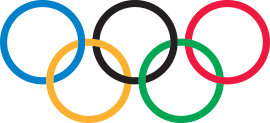IFMA was granted provisional recognition by the IOC in 2016, a journey that started over a decade ago, and that continues today towards the goal of one day being included in the programme of an Olympic Game.
Since IFMA’s establishment in 1993, the IFMA has come a long way, not only developmentally, but also geopraphically, with its satellite office located at the Maison Du Sport in Lausanne, the Olympic Capital.
But how did the City of Lausanne come to meet its Olympic destiny?

In 1915, there was nothing to suggest that Lausanne would become the epicentre of the sporting world. Today, the five interlocking rings welcome travellers as they arrive at the railway station – and this is by no means the only expression of the Olympic spirit in the city. While Lausanne, nestled on the northern shores of Lake Geneva, is now known internationally as the Olympic Capital, it owes this status to the resolve of a certain French baron who had fallen in love with the area, and to the terrible context of the First World War.
While Lausanne is known today throughout the world as the Olympic Capital, it owes this status to the reviver of the Games, Pierre de Coubertin. The French baron was very much taken with the Vaudois capital, located on the northern shores of Lake Geneva, and the surrounding area, and he visited the city during the early part of the 20th century. In 1906, in the wake of the difficulties encountered in organising the Games in 1900 and 1904, he wrote: “If, one day, a New Olympia is to be established somewhere in Europe, it is most probably on the shores of a Swiss lake that its buildings will rise.” He therefore began looking for a long-term solution. Why not, he thought, create a permanent site to host the Olympic Games? He initially set his sights on Morges, a town situated near Lausanne, and began work on the project, designing plans for the Olympic Stadium, the Olympic Village and the canteen. But the project never materialised, among other reasons after encountering opposition from International Olympic Committee (IOC) Members who wanted to continue to hold the Games every four years in a different city around the world.

Nevertheless, Coubertin remained very attached to the Lausanne region and the Canton of Vaud. In the 1906 Olympic Review, he hailed Switzerland as the “queen” of sport and declared that the country would “become the point of convergence for global sport”. In 1914, shortly after the Olympic Congress in Paris, where he presented the emblem he had designed – the five interlocking Olympic rings, representing all the continents united by Olympism – a deadly conflict broke out in Europe and soon spread throughout the world. The First World War interrupted the Games cycle, and Coubertin decided to leave Paris and find a neutral territory in which to establish the IOC headquarters. He opted, naturally, for Lausanne. In April 1915, he met the Mayor of the city, Paul Maillefer, and premises were assigned to the relatively young international institution in the Casino de Montbenon, overlooking the city. On the 10th of that month, a ceremony was held at the town hall to formalise the IOC’s establishment in Lausanne.
In his speech, Coubertin explained: “The present act has been in preparation for some time. It had been envisaged since 1907 that this country would become the focal point of our international activity […] This beautiful city, where Greece and France alike have so many friends, is well versed in the various expressions of contemporary civilization. Its hospitality is proverbial, its renown universal. The work of balance and beauty that the International [Olympic] Committee has started and directed these past 20 years will continue productively here. In the proud and independent atmosphere of Lausanne, Olympism will find guarantees of the freedom it must enjoy in order to move forward.”



